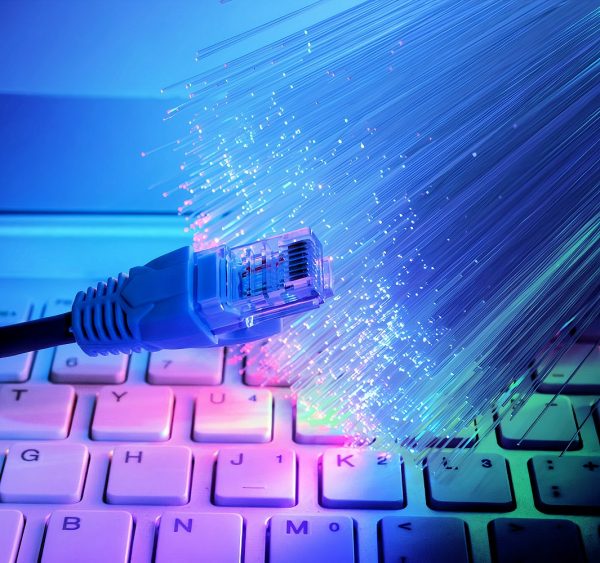Study Finds Full Fibre is the Most Energy Efficient Broadband

A new study from the Prysmian Group, which was commissioned by cable manufacturer Europacable, has found that Fibre-to-the-Premises (FTTP) based broadband ISP networks are the most energy efficient of consumer fixed line technologies, compared with FTTC (VDSL2) and Hybrid Fibre Coax (DOCSIS 3 networks, like Virgin Media).
The research attempted to evaluate the overall energy consumption for each of the three access technologies at a ubiquitous rollout, using a model that was based on 6 real regions in Germany (i.e. representing a typical rural or urban settlement structure). The general target was to provide a minimum of 50Mbps on every connection within this region (i.e. 100% take-up) and it also factored in the impact of consumer routers.
As the tables below show, the access technologies differ considerably in the number of required active network elements and locations. The HFC network with its 794 fibre nodes and 12 CMTS needs the most active network elements. Followed by VDSL2 Vectoring with 538 active street cabinets (DSLAMs) and six central offices. FTTH has with its 36 Points of Presence (PoPs) by far the lowest amount of active network elements in different locations.
Advertisement
Overall, the power consumption of the HFC and VDSL2 access networks came out as 1.8 to 2.2 times the power of FTTP (PtP) and up to approximately 7.5 times more than the FTTP (GPON) access network. Expressed in figures, the HFC access network requires 114kW, the VDSL2 access network 142kW, the FTTP (PtP) network 64kW and the FTTP (GPON) access network 19kW.
Comparison of the number of active network elements and the power consumption of the examined access technologies

For the customer premises equipment, it is somewhat different. Here the HFC network is placed last with 456kW, the FTTP networks second with 341kW and the VDSL2 network is first with 253kW. The reason is because an additional user device (house amplifier or ONT) is used for the HFC and the FTTP networks. Especially for the FTTP networks, the energy consumption could be reduced by optimizing the customer premises equipment.
Advertisement
Therefore, the total power consumption of access network and customer premises equipment differs not much between the VDSL2 and the FTTP (PtP) network – 396kW and 406kW respectively. The lowest power consumption was the FTTP (GPON) network with 360kW, while the HFC network had a far bigger power consumption of 569kW.
Annual energy consumption and CO2 emission

At this point it’s worth highlighting that full fibre networks can still consume a fair bit of power when they’re running at full pelt, yet at any given moment most consumers will only ever be using significantly less than the maximum capacity of their line (this is a facet of package choice and the fact that the vast majority of online services simply can’t make use of all that speed). Internet connections also tend to sit fairly idle for much of the day.
Advertisement
However, today’s report shows that when you compare energy usage at a specific level of speed (50Mbps), across modern broadband technologies in a real-world style setting, then generally it’s FTTP (particularly GPON) that is the most efficient and this gap increases as the performance grows. None of this will come as much of a surprise to those familiar with how it works, but it’s still an interesting piece of research. Oh and there’s a video..
Mark is a professional technology writer, IT consultant and computer engineer from Dorset (England), he also founded ISPreview in 1999 and enjoys analysing the latest telecoms and broadband developments. Find me on X (Twitter), Mastodon, Facebook, BlueSky, Threads.net and Linkedin.
« Broadband ISP Pulse8 Reduces UK Home Fibre Package Prices
Sky UK Engineers Adopt Ford Plug-In Hybrid Electric Vans »






















































The data in the two tables is duplicated and doesn’t match the text.
Sorry, bad upload, I’ve added in the correct second table. You kind of have to take both together.
The titles of the two tables seem to be the wrong way round though?
Fixed.
The choice is pretty clear for new installs. How long, though, to recoup the energy used to manufacture and install the new cable needed to replace copper or coax with fibre for FTTP?
Fibre cable is cheap and easy to produce. The wagon rolls and civil engineering to lay it is far more significant in terms of cost.
The figure of 4,200kW for domestic power consumption presumably excludes hot water and central heating. As I do not use gas, my electricity consumption is about 14,000kW, so the 88 units a year to provide cable broadband works out at about 0.5% of my usage.
Yes it’s all electricity.
14k! While I have a wood burner and solar panels I don’t hit 3500kwh!
do you happen to have your hot water heater running all the time keeping the hot water at 60 degrees? It’s wasteful and expensive if so. A lot of people with electric heating have it running this way without realising.
You may want to look into getting a timer that only turns the boiler on around when you would normally need hot water (morning and evenings, and a boost around lunch time for example) and then rely on the tank insulation to maintain usably hot water for hand washing during the rest of the day.
14,000 kW!! My entire house consumes about _12_ kW when the electric shower is running, and usually less than 1 kW otherwise.
Pretty sure the OP means per year.
14,000 kWh is the combined usage over a year.
1 kWh is the amount of electricity used when consuming 1kW continuously for 1 hour (or 2kW for half an hour, etc). A 14kW shower, when run for 5 minutes, would use about 1.2kWh of electricity.
My annual usage for electricity is 3,500 kWh (with gas heating about 14,000kWh), so the household usage figure seems reasonable.
However, I think they have done some dubious stuff working out power consumption *per person*. Most households have one Internet link, so they should simply have shown the number of households connected in the network footprint, and then compared that to average household electricity usage.
I’m pretty sure *average* occupancy of households is much less than 4. By using this figure they’ve tried to show proportion of electricity usage per person is higher than it really is.
14,000 kWh/year sounds much more reasonable. That’s about 1.6 kW.
14,000 kW/year isn’t even a measure of consumption, it’s a measure of how fast the consumption is changing. Acceleration instead of speed, if you will.
Yes, I apologise, I mistyped. “kWh” not “kW”!
The Virgin Media coax gets warm, where it connects to their modem. So I’m not shocked HFC uses a chunk more power.
On the other hand, I’m surprised how efficient VDSL2 can be, given DSL has always been described as a hack, squeezing blood from stone.
What’s going down the coax to warm it?
“For the customer premises equipment, it is somewhat different. Here the HFC network is placed last with 456kW, the FTTP networks second with 341kW and the VDSL2 network is first with 253kW. The reason is because an additional user device (house amplifier or ONT) is used for the HFC and the FTTP networks.”
There is no ONT for the HFC network. I suspect that the large HFC CPE power usage is due to the fact that Virgin Media has about 3.6m video subscribers, and some have multiple STBs.
You’ve parsed the original sentence wrong. Read it again.
Be sure to write to your MP and remind them that unless you get FTTP, all the polar bears will die.
Good enough excuse for me